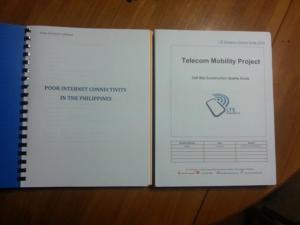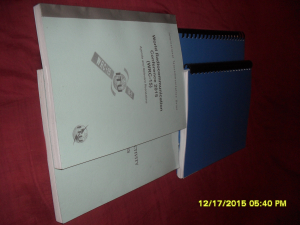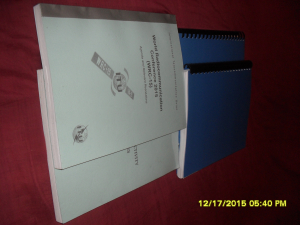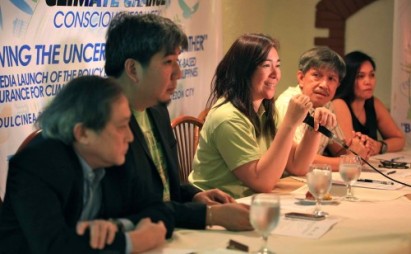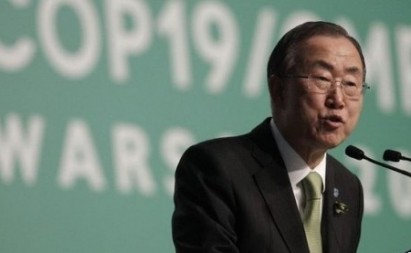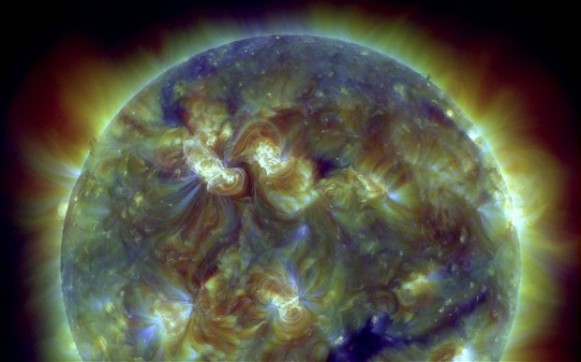The International Center for Strategic Communications Studies
ICSCOMS
The International Center for Strategic Communications Studies – ICSCOMS is a colloquium of experts in a variety of fields that deal with strategic and other concerns in the different areas of Communications.
Communications is a pervasive aspect of human endeavor. It is a global necessity and holds an important niche in the lives of people, families, groups of individuals, corporate organizations and entire nations.
Objectives
To conduct studies, research and development in the area of communications.
Establish a communications research laboratory that will invite and accommodate as many experts and specialists in various fields to undertake tests, trials, experiments, design and development, in communications.
Deliver results of studies, research and designs and proto-types in selected instances to specific recipients as well as in most part, to the people all around the planet.
To contribute to the goal of bringing communications for peoples all over the world.
 The Organization
The Organization
ICSCOMS…
View original post 47 more words
POOR INTERNET CONNECTIVITY IN THE PHILIPPINES
A REVIEW OF EXISTING LITERATURE
A technical paper that embarks upon the actual objectives of the State for the benefit of stakeholders and users of Internet Services in the Philippines will shed light on the existing and future aspects of the service.
Such a paper shall make apparent all the reasons and basis for explaining the current state of Internet in the Philippines.
As the situation stands, Internet service in the country today is miserably slow and yet it counts as being among the most expensive all over the world. Why did such a situation come into being? How were investments and revenues of the licensed providers used to allow this to happen? What factors helped cause the snail paced speed of Internet in spite of exorbitant earnings amassed by providers from helpless subscribers? In the face of such wretched conditions is the Philippine Government simply going to stay immobile…
View original post 835 more words
Part I and II of study on Why Internet is slow in the Philippines
We have finally completed the technical paper on Why Internet is slow in the Philippines.
These are the screenshots and images of the doc we finished just about a week or so ago.
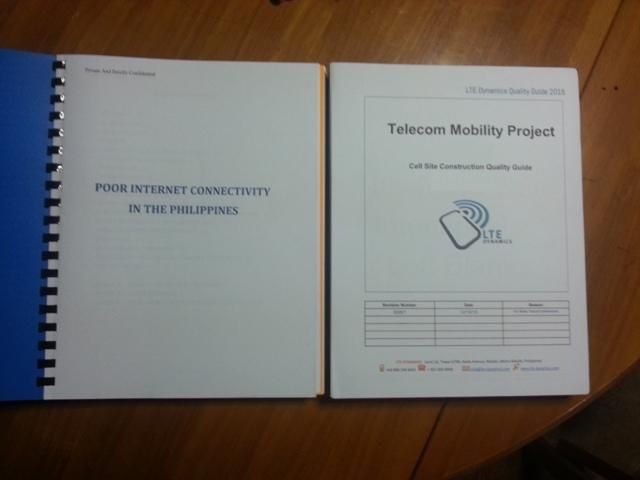
Study on Why Internet is Slow in the Philippines
Watch out for the book version of why the internet is slow in the Philippines. We will announce the publication of the technical report and its availability for everyone.
Merry Christmas all, be patient with your slow internet now. Fast internet speed is coming very, very soon to your computers, devices and mobile phones!!!
Slow Internet in the Philippines
Little do the current crop of Philippine stakeholders know that any scarce resource in the telecommunications industry, to inlcude every single one of the specific bandwidths of the various Spectrum of our Radio Frequencies, are only allocated by the International Telecommunications Union (ITU).
Some quarters believe that owning the entire breadth of one whole Spectrum, whether one is able or unable to pay the Spectrum Usage Fee (SUF) to the government, is legal and just okay.
It is not legal and it is not okay. It is immoral and an abomination. The International Telecommunications Union (ITU), the Asian Pacific Telecommunity (APT) will not stand for this. This has got to change.
The ITU recently held its 2015 Conference in Geneva, Switzerland and declared as follows:
“WRC‐15 will provide more bandwidth for mobile– broadband
“Governments worldwide are making available more– spectrum – in line with national broadband planning and desired long…
View original post 53 more words
The International Center for Strategic Communications Studies
ICSCOMS
The International Center for Strategic Communications Studies – ICSCOMS is a colloquium of experts in a variety of fields that deal with strategic and other concerns in the different areas of Communications.
Communications is a pervasive aspect of human endeavor. It is a global necessity and holds an important niche in the lives of people, families, groups of individuals, corporate organizations and entire nations.
Objectives
To conduct studies, research and development in the area of communications.
Establish a communications research laboratory that will invite and accommodate as many experts and specialists in various fields to undertake tests, trials, experiments, design and development, in communications.
Deliver results of studies, research and designs and proto-types in selected instances to specific recipients as well as in most part, to the people all around the planet.
To contribute to the goal of bringing communications for peoples all over the world.
 The Organization
The Organization
ICSCOMS…
View original post 47 more words
Part I and II of study on Why Internet is slow in the Philippines
We have finally completed the technical paper on Why Internet is slow in the Philippines.
These are the screenshots and images of the doc we finished just about a week or so ago.
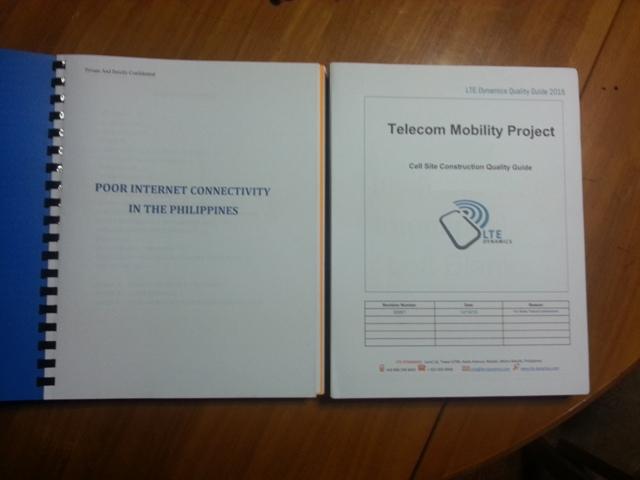
Study on Why Internet is Slow in the Philippines
Watch out for the book version of why the internet is slow in the Philippines. We will announce the publication of the technical report and its availability for everyone.
Merry Christmas all, be patient with your slow internet now. Fast internet speed is coming very, very soon to your computers, devices and mobile phones!!!
Slow Internet in the Philippines
Little do the current crop of Philippine stakeholders know that any scarce resource in the telecommunications industry, to inlcude every single one of the specific bandwidths of the various Spectrum of our Radio Frequencies, are only allocated by the International Telecommunications Union (ITU).
Some quarters believe that owning the entire breadth of one whole Spectrum, whether one is able or unable to pay the Spectrum Usage Fee (SUF) to the government, is legal and just okay.
It is not legal and it is not okay. It is immoral and an abomination. The International Telecommunications Union (ITU), the Asian Pacific Telecommunity (APT) will not stand for this. This has got to change.
The ITU recently held its 2015 Conference in Geneva, Switzerland and declared as follows:
“WRC‐15 will provide more bandwidth for mobile– broadband
“Governments worldwide are making available more– spectrum – in line with national broadband planning and desired long…
View original post 53 more words
Power Sector Concerns Part IV: Financing for Badly Needed Power Plants
Philippine Power Plant Generation Projects Without Financial Closing
May 12, 2015
Seriously Hemorrhaging Power Sector
In 1990, the National Economic Development Authority – NEDA, asked for the input of the Department of National Defense then under Secretary Fidel V. Ramos, for the medium term projections of the national economic development plan.
We drafted the response of Secretary Ramos and one of our more prominent suggestions was for the Philippines to increase by leaps and bounds its refining capacity for raw diesel fuel and to make a firm target of building a nationwide power infrastructure with a generation capacity of 100,000 Megawatts or even higher.
At the time, the Philippine population, 60,703,206 compared to that of Taiwan that had only a population of 20,393,628 was 2.97 times as many as Taiwan’s or 297% bigger. In that period, Taiwan already had an installed capacity of around 20,000 Megawatts.
The total land area of Taiwan is only 36,000 square kilometers; whereas, the Philippines has a size of 300,000 square kilometers, nearly ten times the size of Taiwan.
Yet, the combined installed capacity of all power plants in the entire Philippines during the year in question was only 5,772 Megawatts. Today, while Taiwan already has more than double its capacity in 1990 (Taiwan installed capacity is above 45,000 Megawatts as of end of 2013), the total Philippine generation capability today is only 17,000 Mega Watts.
If you look at World Bank figures, the Philippines has a capacity of 23,474 kt of oil equivalent or already 27,300.69 Megawatts as early as in 2009. How the World Bank reflects a bigger capacity could mean that some of the power plant projects it supported through loans are mirrored in its statistics, whereas in the Philippines’ database, some of the foreign loan-assisted undertakings did not push through because the monies got lost in the traffic. The funds got hijacked by criminals in expensive suits and barongs.
For a country ten times bigger than its neighbor that has a power infrastructure capable of generating 45,000 MW, we are able to generate only less than half of the capacity of Taiwan.
It is no wonder why all the efforts of the present government and past administrations to prevent the inevitability of the forthcoming extreme power shortage in many areas of the country are all abject failures.
Be Prepared
Every single sector in the Philippines should brace for the impact of the power shortage when the month of June and July come around. If the heat brought about by El Niño will be very severe due to global climate change, more than 80% of the entire current Philippine population of over 100,000,000 will be suffering and cursing and blaming the government, to no avail.
Appeal for Investor Support
What is needed is for investors all around the world today to come to the rescue, even before the impact of the power outages will hit the country. When the stirrings of the outages takes its casualties by the tens, hundreds and over, affecting both locals and tourists – young and old, it will have become useless and tenuous to be calling for “HELP!” when people especially very young vulnerable children as well as senior citizens are getting ill or dying.
The risks to the population arising from power shortage, to say the very least, are unpleasant to imagine. The damage will be felt well unto many, many months after 2015 is gone. It is immensely possible that the pain and hardship will linger in the Philippines until 2017.
Ready To Go Power Plant Projects
The application for full government approval of a power generation plant for Independent, Co-Shared (Government and Private), as well as other types of these projects on any of the financing schemes available (Build Operate Transfer, Build Operate Lease, etc.) under normal circumstances takes about four to five years to complete – with all the requirements already complied by the applicant.
Some projects with small power capacity for instance, in rare circumstances are completely approved within the span of three to four years.
Under the dynamics of Philippine setting, the applicant usually exposes itself from a low of THREE HUNDRED MILLION PHILIPPINE PESOS up to sometimes very high exposures. In the case of a power facility in Quezon Province, before it became operational and had all the necessary permits on hand, the project proponent actually spent billions – some of which went into the hands of high ranking officials in the Executive Branch and political quislings that claimed closeness to the Philippine President.
None of the payouts composing the bigger share of those billions spent by the Quezon Province power project are recorded on any ledger in the country, with the possible exception of the very private diary of the paymaster or fund comptroller of the company project proponent.
Financing the securing of a power generation plant permit to construct and operate and the appropriate license or franchise for the operator forms part of the horrendous hidden costs of the total budget for building the facility and running it.
Over the years, projecting enormous income from owning and operating power generation facilities, many entrepreneurs or even public institutions, began their dreams of installing power facilities. The types of these facilities includes the non-renewable (mostly diesel-dependent) and renewable power sources, such as biogas, hydro, solar, wind and ocean, among others.
More than 600 of these startups and big proponents were able to secure licenses and permits from the proper authorities and the consent of the stakeholders. Out of a total 648 power projects, there around 90 power projects that no longer have any money to proceed with the construction and eventually, the operation of their proposed power plants.
Financial Support
In the case of more than 90 power plant projects out of a total of 648 power generation projects all in all around the Philippine Archipelago, there are no investors to fund added activities beyond the securing of the government permits and approvals.
Therefore because of lack of capability of the applicant holding the final government approval to start the building phase of the power generation facility, the project is stalled indefinitely instead of being able to hit the ground running. Thanks to the bribes and gifts that top officials extort out of power project proponents, by the time the project is due to break the ground, much of the initial funds allocated for the project have already gone down the drain.
Out of the remaining 558 projects of the 648, a large percentage will not push through, also because of the confusing position of the government vis-a-vis the private sector on the parameters to be used in categorizing projects as having financial closing or not.
In the summations of the projected capacities alone, the power sector states that 90 power projects without financing will produce 12,170 Megawatts of electricity for the combined areas of Luzon, Visayas, Mindanao.
However, surprisingly, according to the government report as of March 2015, the total capacity in terms of electric power that will be produced by these 648 power plants – nearly 100% of which is initiated by the private sector, is only more than 10,000 Megawatts. We need to clarify further with the Department of Energy how their figures appear to be very topsy turvy.
All in all, these 90 power projects require more than UNITED STATES DOLLARS SIXTY BILLION SIXTY MILLION ( $60,600,000,000 ) to build up to Start Up Commissioning.
Thereafter, the unfunded 90 power projects will need token augmentation funding for continuous operations since the facility’s capacity is badly required in the area where it is situated.
The need is doubly emphasized for the current year 2015 when the summer season compounded by the El Niño phenomenon will geometrically amplify the consumption of power in the Philippines. God forbid, if the solar maxima or solar super storm happens, goodbye power problems. Also, goodbye Philippines!
Estimates coming from the Department of Energy state that, broken down into capacity, the following are the required investments for the major areas of the Philippines:
Luzon
10,000 Megawatts – 40 Units – $15,000,000,000.00
Visayas
470.00 Megawatts – 11+ Units – $705,000,000.00
Mindanao
1,700 Megawatts – 30+ units – $2,550,000,000.00
Negotiations Talking Points
For the fully approved and ready to start power generation projects, the required capacity of the interested investor who seeks to buy out any one of the unfunded approved 90 power generation plant projects is:
- Agreement of assignment, transfer of the Power Project between original project owner and the Investor.
- Reimbursement for the original project owner on case to case basis of cost of three-to-five year workout for approval of project at minimum or floor rate PHP300,000,000.00 to a higher amount, to be specified by the owner of approved project.
- Proof of Capability to fund at minimum of USD5,000,000 per Megawatt of the power generation plant project being taken over or funded by the investor.
- Retention of the original owner of 15% share in the resulting spin off entity that will operate the power plant and pro-rated income from sales and marketing after deductions of the power plant.
Any investor has to be fully transparent and must submit verifiable proof of fund prior to commencing any formal negotiations with the original project owners to ensure the closing of the deal.
Any inquiries related to this article may be forwarded to asiacommunications@msn.com, telephones +632-904-1950, +632-5033966; mobile phone +639162726638 and +639288389444.
GREENGOLD CYBERPARKHOLDINGS CORPORATION
Related Readings:
